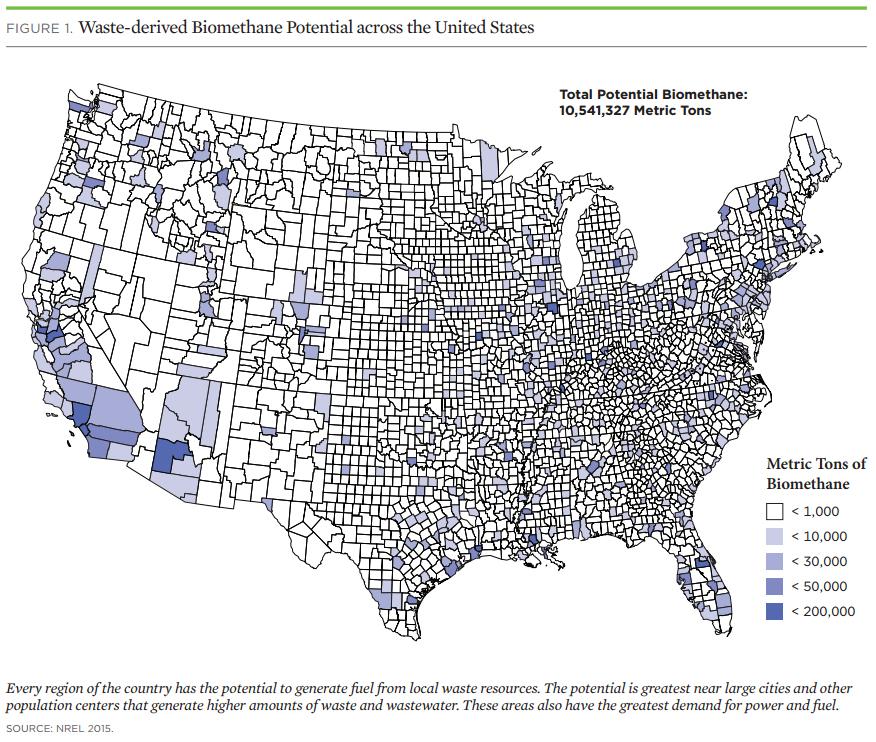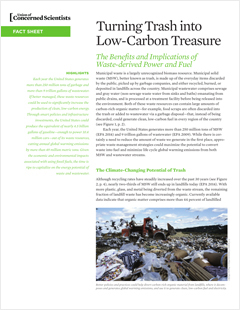What happens to garbage when you throw it away? In the United States, two-thirds of our trash ends up in landfills—over 150 million tons every year. About half of that waste comes from food scraps and other organic materials, producing methane and other greenhouse gases as it decomposes. The pollution adds up: recent data suggest that waste management is the third largest contributor of U.S. methane emissions, following the energy and agricultural sectors.

But methane isn’t just a greenhouse gas—it’s also an energy-dense fuel that, as a resource, we’re wasting. With the right investments, we could isolate organic waste before it enters landfills, then capture the resulting methane. Sewage and wastewater treatment can also be optimized for methane production. Once recovered, this clean, low-carbon “biomethane” can be readily used for electricity, heating, and transportation. U.S. waste-derived biomethane could produce nearly 4.5 billion gasoline equivalent gallons of fuel annually—enough energy for 10.4 million cars or 13.7 million homes.
Though regions and resources differ, the United States currently only captures and uses about 18 percent of its total biomethane potential. Increasing that percentage will require smart, forward-looking policies that recognize the valuable potential of our waste streams—isolating organic waste, generating energy, and composting what’s left or turning it into fertilizer.




